Why Do Transformers Leak Oil?
Have you ever noticed a small puddle of oil under your transformer? It’s not just unsightly – it could be a sign of a bigger problem lurking beneath the surface.
Transformers leak oil due to various reasons including mechanical failures, temperature fluctuations, corrosion, poor maintenance, and environmental factors. These leaks can compromise the transformer’s efficiency, pose safety risks, and lead to environmental hazards if not addressed promptly.
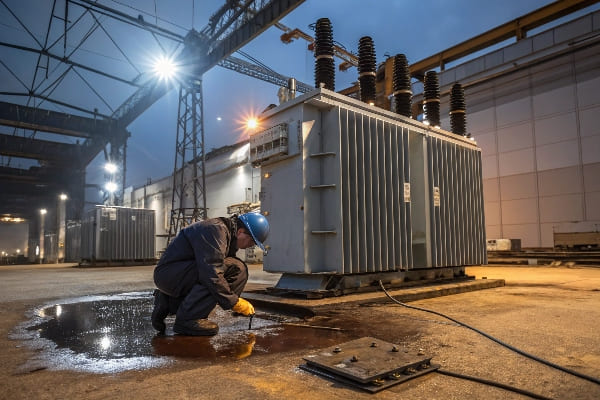
In my years of working with transformers, I’ve seen how a small leak can quickly turn into a major headache. Let’s dive into the reasons behind these leaks and how to address them effectively.
Common Causes of Transformer Oil Leaks: What’s Really Going On?
Have you ever wondered why some transformers seem to spring leaks more often than others? The answer lies in understanding the common culprits behind these pesky oil escapes.
Transformer oil leaks are often caused by gasket failures, loose fittings, cracked welds, and deteriorated seals. These issues can arise from age, wear and tear, improper installation, or manufacturing defects. Identifying the specific cause is crucial for effective repair and prevention.
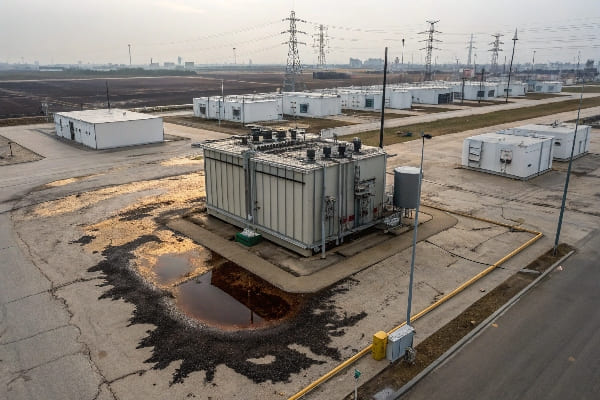
Throughout my career, I’ve encountered numerous oil leaks, each with its own unique story. Here’s a breakdown of the most common causes I’ve seen:
Gasket Failures
-
Age-Related Deterioration:
- Gaskets become brittle over time
- Loss of elasticity leads to poor sealing
-
Improper Installation:
- Overtightening can crush gaskets
- Undertightening allows for leaks
-
Material Incompatibility:
- Some gasket materials degrade faster in oil
- Incorrect material choice accelerates failure
Loose Fittings and Connections
| Component | Common Issue | Potential Cause |
|---|---|---|
| Valves | Loose packing | Vibration, thermal cycling |
| Flanges | Bolt loosening | Improper torque, thermal expansion |
| Pipe Joints | Thread wear | Frequent maintenance, poor quality |
Cracked Welds
Based on my experience, cracked welds are often overlooked but can be a significant source of leaks:
-
Thermal Stress:
- Repeated heating and cooling cycles
- Different expansion rates of welded materials
-
Mechanical Stress:
- Vibrations from core and windings
- External forces (e.g., wind, seismic activity)
-
Manufacturing Defects:
- Poor weld quality during production
- Inadequate post-weld heat treatment
I once encountered a transformer that had been leaking for months. The maintenance team had replaced gaskets and tightened fittings without success. Upon closer inspection, we discovered a hairline crack in a weld near the bottom of the tank. This tiny defect, barely visible to the naked eye, was responsible for a persistent and costly leak.
Deteriorated Seals
-
Bushing Seals:
- Often overlooked during routine maintenance
- Can fail due to UV exposure and ozone attack
-
Manhole Cover Seals:
- Frequent access can damage seals
- Improper reinstallation after maintenance
-
Radiator Connection Seals:
- Subject to thermal cycling stress
- Can be damaged during radiator cleaning
Remember, identifying the root cause of a leak is just the first step. Proper repair and preventive measures are crucial to ensure long-term transformer health and reliability.
Mechanical Failures Leading to Oil Leakage: When Does Wear and Tear Become a Problem?
Have you ever wondered at what point normal wear and tear crosses the line into a serious mechanical failure? When it comes to transformers, this transition can happen faster than you might think.
Mechanical failures leading to oil leakage in transformers often result from vibration damage, material fatigue, and design flaws. These issues can cause component misalignment, crack propagation, and seal degradation, ultimately leading to oil escapes.
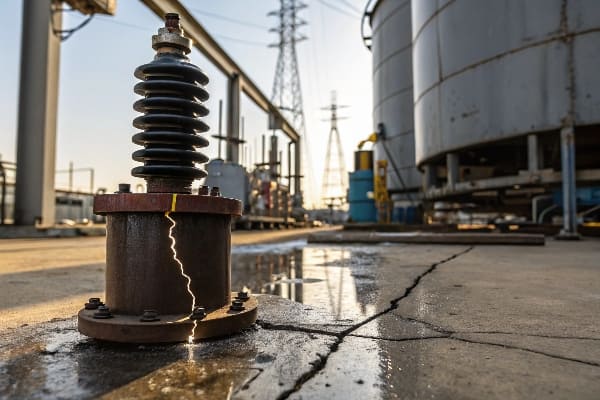
In my years of working with transformers, I’ve seen how seemingly minor mechanical issues can escalate into major oil leaks. Here’s what you need to know:
Vibration-Induced Damage
-
Core and Winding Vibration:
- Loosens bolts and connections over time
- Can cause misalignment of components
-
External Vibration Sources:
- Nearby machinery or traffic
- Can exacerbate existing weaknesses
-
Resonance Issues:
- Amplified vibrations at certain frequencies
- Can cause rapid deterioration of seals and joints
Material Fatigue
| Component | Fatigue Mechanism | Result |
|---|---|---|
| Tank Walls | Cyclic stress from thermal expansion | Crack formation |
| Gaskets | Compression set from constant pressure | Loss of sealing properties |
| Welds | Repeated stress cycles | Crack initiation and growth |
Design and Manufacturing Flaws
Based on my experience, some leaks can be traced back to the drawing board:
-
Inadequate Stress Analysis:
- Underestimated forces during operation
- Can lead to premature component failure
-
Material Selection Issues:
- Incompatible materials in contact
- Accelerated corrosion or degradation
-
Manufacturing Defects:
- Poor quality control during production
- Hidden flaws that manifest over time
I once investigated a series of leaks in a batch of transformers from the same manufacturer. After extensive analysis, we discovered that a slight miscalculation in the design of the tank’s reinforcement ribs was causing uneven stress distribution. This led to accelerated fatigue in certain areas, resulting in multiple leak points. This experience highlighted the importance of thorough design reviews and quality control in preventing mechanical failures.
Thermal Cycling Effects
-
Expansion and Contraction:
- Different rates between materials
- Can cause loosening of fittings and seals
-
Thermal Fatigue:
- Repeated heating and cooling cycles
- Weakens metal structures over time
-
Oil Viscosity Changes:
- Affects sealing properties at different temperatures
- Can lead to leaks in extreme conditions
Remember, mechanical failures don’t always announce themselves with dramatic breakdowns. Often, it’s the slow, gradual wear that leads to significant leaks. Regular inspections and preventive maintenance are key to catching these issues before they become major problems.
Impact of Temperature Fluctuations on Oil Seals: How Does Heat Play a Role?
Ever noticed how some materials behave differently in hot and cold weather? The same principle applies to transformer oil seals, and the consequences can be more serious than you might think.
Temperature fluctuations significantly impact transformer oil seals by causing material expansion and contraction, altering viscosity, and accelerating degradation. These changes can lead to seal deformation, loss of sealing properties, and ultimately, oil leaks.
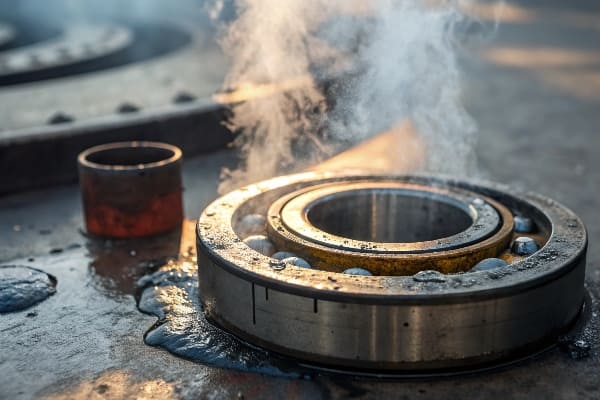
Throughout my career, I’ve seen how temperature changes can turn a perfectly good seal into a leak waiting to happen. Here’s what you need to know:
Material Expansion and Contraction
-
Differential Expansion:
- Different materials expand at different rates
- Can cause gaps or excessive pressure on seals
-
Seal Compression Set:
- High temperatures can permanently deform seals
- Leads to loss of sealing effectiveness over time
-
Low-Temperature Brittleness:
- Some seal materials become rigid in cold weather
- Can crack or lose flexibility, compromising sealing
Oil Viscosity Changes
| Temperature | Oil Viscosity | Effect on Seals |
|---|---|---|
| High | Decreased | Potential for increased leakage |
| Low | Increased | Possible seal extrusion or damage |
| Fluctuating | Variable | Cyclic stress on seal materials |
Accelerated Degradation
Based on my observations, temperature extremes can speed up seal deterioration:
-
Chemical Degradation:
- High temperatures accelerate chemical reactions
- Can break down seal materials faster
-
Oxidation:
- Increased temperatures promote oxidation
- Leads to hardening and cracking of seals
-
Thermal Aging:
- Cumulative effect of temperature exposure
- Reduces seal elasticity and resilience over time
I once worked on a transformer located in an area with extreme temperature swings. Despite using high-quality seals, we experienced recurring leaks. After extensive analysis, we discovered that the daily temperature cycle was causing the seals to expand and contract repeatedly, leading to premature failure. We solved the issue by implementing a more robust seal design and improving the transformer’s thermal management system.
Mitigation Strategies
-
Material Selection:
- Choose seal materials suited for the operating temperature range
- Consider using composite seals for better performance
-
Design Considerations:
- Implement expansion joints where necessary
- Design for uniform temperature distribution
-
Maintenance Practices:
- Regular inspection of seals, especially after temperature extremes
- Timely replacement of degraded seals
Remember, while we can’t control the weather, we can design and maintain our transformers to better withstand temperature fluctuations. Proper material selection, thoughtful design, and regular maintenance are key to keeping your transformer leak-free in any climate.
Corrosion and Wear of Transformer Components: Is Your Transformer Rusting Away?
Have you ever seen an old car slowly deteriorating in a junkyard? Believe it or not, your transformer can face a similar fate if corrosion and wear are left unchecked.
Corrosion and wear of transformer components can lead to significant oil leaks. These processes weaken metal structures, degrade sealing surfaces, and compromise the integrity of joints and connections. Over time, even minor corrosion can escalate into major leakage points.
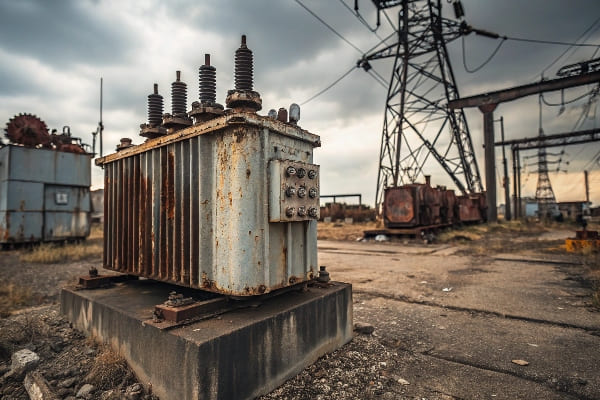
In my years of working with transformers, I’ve seen how insidious corrosion can be. Let’s dive into the details of this silent threat:
Types of Corrosion in Transformers
-
Galvanic Corrosion:
- Occurs between dissimilar metals
- Common in joints and connections
-
Pitting Corrosion:
- Localized attacks creating small holes
- Can lead to pinhole leaks
-
Crevice Corrosion:
- Occurs in tight spaces like gasket areas
- Can undermine sealing surfaces
Wear Mechanisms
| Component | Wear Type | Consequence |
|---|---|---|
| Valves | Erosion | Compromised sealing |
| Gasket Surfaces | Abrasion | Loss of sealing effectiveness |
| Threaded Connections | Galling | Difficulty in maintenance, potential leaks |
Factors Accelerating Corrosion and Wear
Based on my experience, several factors can speed up these destructive processes:
-
Environmental Conditions:
- High humidity
- Saltwater exposure in coastal areas
- Industrial pollutants
-
Operational Factors:
- Oil acidity
- Presence of contaminants
- Frequent thermal cycling
-
Maintenance Practices:
- Improper cleaning methods
- Use of incompatible materials during repairs
- Neglect of protective coatings
I once encountered a transformer that had been in service for over 30 years in a coastal environment. Despite regular maintenance, we discovered severe corrosion in areas that were difficult to inspect routinely. This corrosion had compromised several sealing surfaces, leading to multiple small leaks. This experience highlighted the importance of comprehensive inspections and the need for specialized maintenance practices in harsh environments.
Prevention and Mitigation Strategies
-
Material Selection:
- Use corrosion-resistant alloys where appropriate
- Consider sacrificial anodes for critical components
-
Protective Coatings:
- Apply and maintain appropriate coatings
- Regularly inspect and touch up as needed
-
Cathodic Protection:
- Implement for large outdoor transformers
- Particularly effective in high-corrosion environments
-
Regular Inspections:
- Implement a schedule for thorough corrosion checks
- Use advanced techniques like ultrasonic testing for hidden corrosion
Remember, corrosion and wear are ongoing processes that require constant vigilance. By understanding these mechanisms and implementing proactive measures, you can significantly extend the life of your transformer and prevent costly oil leaks.
Poor Maintenance Practices and Their Role in Oil Leaks: Are You Accidentally Sabotaging Your Transformer?
Have you ever fixed something only to find you’ve made the problem worse? When it comes to transformer maintenance, good intentions without proper knowledge can lead to disastrous results.
Poor maintenance practices significantly contribute to transformer oil leaks. Improper handling of components, use of incorrect materials, and neglect of regular inspections can create new leak points or exacerbate existing ones. Proper training and adherence to maintenance protocols are crucial for preventing these issues.
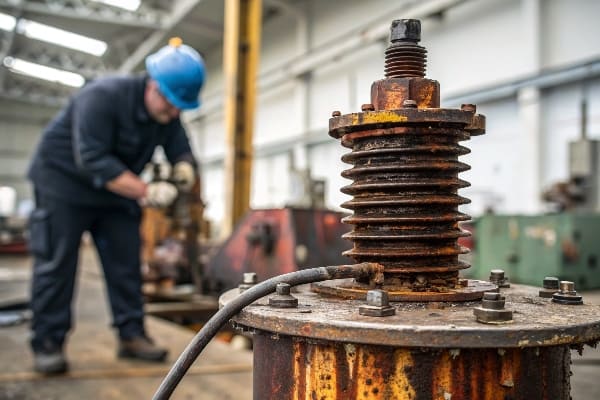
Throughout my career, I’ve seen how well-intentioned but misguided maintenance can turn minor issues into major headaches. Let’s explore the pitfalls to avoid:
Common Maintenance Mistakes
-
Overtightening:
- Can crush gaskets and damage sealing surfaces
- Often done in an attempt to stop minor leaks
-
Using Incorrect Replacement Parts:
- Non-compatible gaskets or seals
- Wrong grade of bolts or fittings
-
Improper Cleaning Methods:
- Harsh chemicals damaging seals
- High-pressure washing forcing water into sealed areas
Neglected Maintenance Tasks
| Task | Consequence of Neglect | Proper Practice |
|---|---|---|
| Gasket Replacement | Deteriorated gaskets leading to leaks | Regular inspection and timely replacement |
| Oil Testing | Undetected oil degradation affecting seals | Scheduled oil analysis and treatment |
| Torque Checks | Loose fittings causing leaks | Periodic retightening to specifications |
Training and Procedural Issues
Based on my observations, many maintenance-related leaks stem from systemic issues:
-
Lack of Proper Training:
- Maintenance staff unfamiliar with transformer specifics
- Reliance on general knowledge rather than transformer-specific procedures
-
Inadequate Documentation:
- Missing or outdated maintenance manuals
- Lack of records on previous repairs or modifications
-
Rushed Maintenance:
- Skipping steps due to time pressure
- Failing to allow proper curing time for sealants
I once consulted on a case where a transformer had developed multiple leaks shortly after routine maintenance. Investigation revealed that the maintenance team had used a generic gasket material instead of the specified type, and had overtightened several fittings in an attempt to ensure a good seal. This well-intentioned but incorrect approach led to gasket failure and distorted sealing surfaces, resulting in significant oil leakage.
Best Practices for Leak Prevention
-
Comprehensive Training Programs:
- Regular updates on maintenance procedures
- Hands-on training for critical tasks
-
Detailed Maintenance Protocols:
- Step-by-step guides for common procedures
- Checklists to ensure all tasks are completed
-
Quality Control Measures:
- Double-checking of critical maintenance steps
- Periodic audits of maintenance practices
-
Proper Tool and Material Management:
- Ensuring availability of correct tools and materials
- Regular calibration of torque wrenches and other critical tools
Remember, good maintenance is about more than just fixing what’s broken. It’s about understanding the intricacies of your transformer and treating it with the care it deserves. By implementing proper training, following detailed procedures, and maintaining a culture of quality, you can significantly reduce the risk of maintenance-induced oil leaks.
Environmental and Operational Factors Contributing to Leaks: Is Your Transformer’s Environment Working Against You?
Ever wondered why some transformers seem to age faster than others? The answer might be in the air – literally. Environmental and operational factors play a huge role in the development of oil leaks.
Environmental and operational factors significantly impact transformer oil leaks. Extreme temperatures, humidity, pollution, and operational stress can accelerate seal degradation, material fatigue, and corrosion. Understanding and mitigating these factors is crucial for maintaining transformer integrity and preventing leaks.
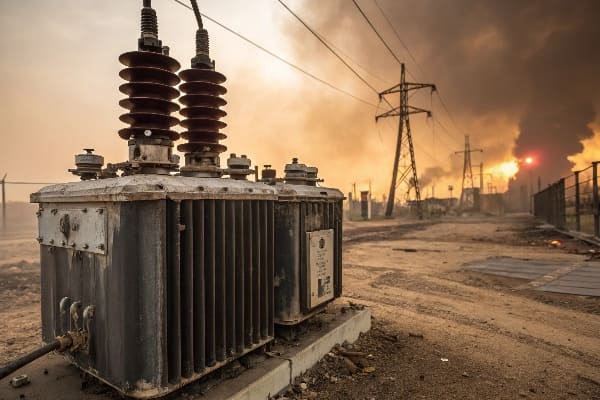
In my years of experience, I’ve seen how a transformer’s surroundings can be its worst enemy. Let’s break down these factors:
Environmental Challenges
- Temperature Extremes:
- Thermal expansion and contraction stress seals
- Can cause material brittleness
- Humidity:
- Promotes corrosion of metal components
- Can degrade certain types of seals
- Pollution:
- Industrial pollutants can attack materials
- Particulate matter can interfere with sealing surfaces
Operational Stressors
| Factor | Impact | Mitigation |
|---|---|---|
| Load Fluctuations | Thermal cycling stress | Proper load management |
| Overloading | Accelerated aging of components | Adherence to rated capacities |
| Vibration | Loosening of fittings and seals | Vibration dampening measures |
Geographic Considerations
Based on my observations, location plays a crucial role in transformer health:
-
Coastal Environments:
- Salt spray accelerates corrosion
- Higher humidity levels stress sealing systems
-
Industrial Areas:
- Chemical pollutants can degrade materials faster
- Increased particulate matter in the air
-
Seismic Zones:
- Ground movements stress structural integrity
- Can cause misalignment of components over time
I once worked on a project involving transformers installed in a coastal industrial area. Despite using corrosion-resistant materials, we found that the combination of salt air and industrial pollutants was causing accelerated degradation of seals and gaskets. We had to implement a more frequent inspection and replacement schedule, along with additional protective measures, to combat these harsh environmental factors.
Operational Factors
-
Cycling Load Patterns:
- Frequent load changes cause thermal stress
- Can lead to fatigue in sealing components
-
Harmonics:
- Can cause increased vibration and heating
- Accelerates wear on insulation and seals
-
Switching Transients:
- Voltage spikes stress insulation
- Can cause micro-cracks in brittle components
Mitigation Strategies
-
Environmental Controls:
- Use of air conditioning or dehumidification in extreme climates
- Installation of air filtration systems in polluted areas
-
Enhanced Design Features:
- Improved sealing technologies for harsh environments
- Use of materials resistant to specific environmental challenges
-
Operational Guidelines:
- Implementing load management strategies
- Regular monitoring and adjustment of operational parameters
-
Customized Maintenance Plans:
- Tailoring inspection and maintenance schedules to specific environmental conditions
- Using condition-based maintenance approaches
Remember, while we can’t change the environment our transformers operate in, we can adapt our design, maintenance, and operational practices to mitigate its effects. Understanding the unique challenges posed by your transformer’s location and operating conditions is key to preventing oil leaks and ensuring long-term reliability.
Conclusion
Transformer oil leaks result from a complex interplay of mechanical, environmental, and operational factors. By understanding these causes and implementing proactive maintenance and design strategies, we can significantly reduce the risk of leaks, ensuring longer transformer life and improved reliability.
Free CHBEB Transformer Catalog Download
Get the full range of CHBEB transformers in one catalog.
Includes oil-immersed, dry-type, pad-mounted, and custom solutions.
Quick Message
Request A free quote
We'd like to work with you
- +86 15558785111
- [email protected]
- +86 15558785111
What We Do
CHINA BEI ER BIAN (CHBEB) GROUP, with 218 million in registered capital, originated from Beijing Beierbian Transformer Group. Headquartered in Beijing for R&D, it operates major production bases in Nanjing and Yueqing, producing high-quality products.
Latest Product
address
BeiJing
No 3,RongJing East Road,BeiJing Economic Technological Development Area,BeiJing,China
JiangSu
No 7️Xiangfeng Road,Jiangning,NanJing,JiangSu,China
WenZhou
No.211, Wei 16 Road, Industrial Zone, Yueqing, Wenzhou, Zhejiang, China.
XiangYang Industrial Zone ,YueQing,WenZhou,ZheJiang,China
contact us
- [email protected]
- +86 13057780111
- +86 13057780111
- +86 15558785111
Copyright © Bei Er Bian Group


